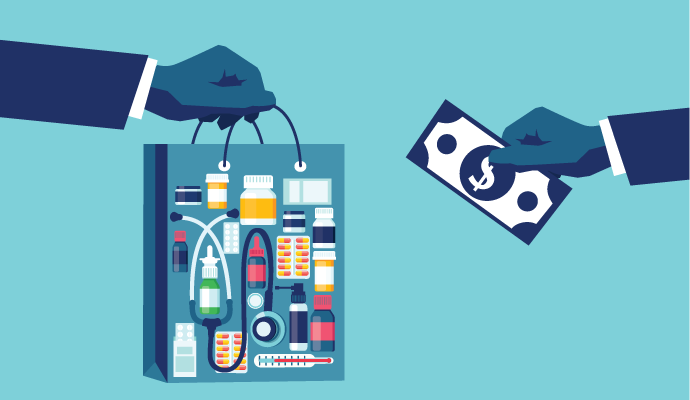GoodRx Reports Largest Uptick in Prescription Drug Prices in Years
Prescription drug prices increased for over 800 medications in January 2020by an average of 4.6%, GoodRx reported.

Source: Getty Images
- In January 2020, prescription drug prices increased for 832 medications by an average of 4.6 percent, the largest increase that has occurred in years, according to a GoodRx analysis.
Of the drugs experiencing price hikes this year, 822 were brand drugs, 175 were specialty drugs, and 77 were healthcare practitioner-administered drugs.
The analysis also found that over 140 manufacturers, including Pfizer, AbbVie, Sanofi, and GSK raised the list price of their drugs between the end of December 2020 and January 31, 2021. Many of the drugs manufcaturers by these companies have seen increases in past years, too.
For example, Pfizer and Sanofi will increase drugs by 5.0 percent or less, while GSK will increase prices of two vaccines, Shingrix and Pediarix, by 7.0 percent and 8.6 percent, respectively.
Pfizer plans to raise its prices on over 60 drugs by between 0.5 percent and 5.0 percent, with a nearly five percent increase on blockbuster treatments, including Xeljanz (4.9 percent) and cancer drugs Ibrance (5 percent) and Inlyta (5 percent).
Additionally, 50 percent of the medications that increased in price in 2021 also increased in price in 2020 and 2019, researchers explained. These medications included Humira (a 21 percent increase), Nucynta (30 percent increase), and Skyrizi (15 percent increase).
AbbVie’s Humira raked in about $15 billion in 2019. With alternative options for patients, a 21 percent increase in the drug could price out many consumers who rely on it, researchers said.
GoodRx researchers also mentioned Cerdelga, Takhzyro, Cinryze, Gattex, Tegsedi, and Aycakit as some of the drugs among the 20 most expensive drugs in the US, each with a list price of over $27,000 per year.
Cerdelga increased by 14.8 percent over the last three years, while Takhzyro increased in list price by six percent over the last two years.
Since 2014, 89 percent and 47 percent of list price increases started with National Average Drug Acquisition Cost (NADAC) and cash price increases. The NADAC and cash prices are what retail pharmacies and consumers pay for prescription medications, respectively.
When a drug is purchased without insurance or with a high deductible health plan, the list price increase significantly affects patients.
Additionally, when a manufacturer raises the price of a medication, the insurance provider oftentimes pays more for that drug. Insuers can then make up the cost by raising premiums, increasing copays, or placing the drug on a higher tier in insurance plans, researchers said.
But this means that the patient ends up paying more out of pocket for it.
A February 2020 report from the Health Care Cost Institute (HCCI) found that prescription drug prices continue to increase due to continued growth in medical service costs and modest uptick in utilization.
The Health Care Cost and Utilization Report analyzed 2.5 billion medical claims for patients up to 65 who are covered by employer-sponsored health plans. The largest increase in average price occurred from administered drugs, which nearly doubled from $470 in 2014 to $813 in 2018.
Anesthesia procedures were the highest priced subcategory at an average $737 in 2014. And in 2018, it was the second highest, averaging $755.
Surgical and emergency room procedures were the third and fourth highest priced subcategories, respectively. They averaged above $400 during the study period.
Out-of-pocket costs continue to be a burden for patients, with an increase of 4.3 percent from 2014 to 2018, reaching $5,892 in 2018.
This is a slight increase from last year’s report, which showed that out-of-pocket costs grew 4.2 percent from 2016 to 2017, translating to $5,641 per person in 2017.
Overall per-person healthcare spending increased 18.4 percent or $610 per person over the five year study period. And cumulative out-of-pocket increase over the five-year period was 14.5 percent, or $114. This increase was lower than the growth in total healthcare spending.
